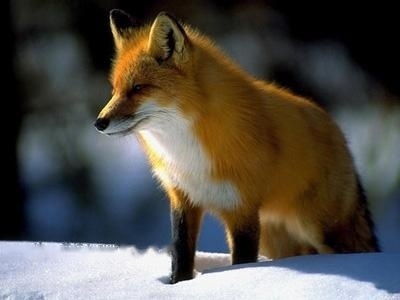
Red Fox
Mating between January and February every year, male foxes fight fiercely for female foxes. The gestation period is about 2 months, and the male and female jointly raise the cubs,
English name: African Pygmy Hedgehog
Lifetime: 3-8 years
Mini Hedgehog The scientific name is the African Pygmy Hedgehog, which is native to Africa. It has a gentle personality and a slender body. It can be stored in teapots and egg cups. They also generally do not cause skin allergies and have a nocturnal habit.
To keep miniature hedgehogs, they need to live in an environment above 21 degrees Celsius, and because they are good at climbing, they should not be kept in iron cages. They are prone to health problems, including gastrointestinal upset, fatty liver disease and heart disease. They typically live three to eight years, but they can be life-threatening if they suffer from the paralyzing "hedgehog swing".
The miniature hedgehog is small, with pure white fur from the face to the abdomen, which is distinct from the brown on the back Different, easily distinguishable from European hedgehogs. However, many individuals are hybrids of the two, and it is more difficult to distinguish. The body length ranges from 15.5 cm to 23 cm, and the weight is 311 grams to 566 grams. Belly and face are white or cream-colored, with white spines mixed with black or coffee; face may have a darker mask-like color; lower feet are usually darker; ears The height is shorter than the length of the spines, and it is covered with hair.
Because hedgehogs cannot stably regulate their body temperature to keep it at the same level, so in winter Hibernation sometimes occurs. When attacked by the enemy, they huddle into a ball to protect themselves. Hedgehogs are very timid and easily frightened. It moves slowly and is generally nocturnal. It has a keen sense of smell and a small appetite, generally foraging when it is dark.
Hedgehogs are very adaptable[1], and they are not strict with the environment. However, hedgehogs have the habit of being quiet and afraid of light, and they are nocturnal and nocturnal. It is best to choose a quiet place with less human interference for family breeding. Because it is not very mobile, you can use the cages used for raising birds or cats, or you can use wooden boxes or cardboard boxes as the hedgehog's home. The box can be covered with hay, pine leaves or straw, but with about 5 cm Pine chips are best, as long as the box is not cramped and has enough room to move around. In addition, put a cat toilet and cat litter in the corner of the box as its toilet, then its smell will be much less. You can usually put it on the floor at home and watch it play with it. It should be noted that due to its isothermal properties, although it can withstand low temperatures, it is still necessary to pay attention to its warmth in winter. Generally, the temperature should be controlled between 23 and 27 degrees Celsius, and the humidity should be controlled below 40%. would not choose to hibernate. Such simple living needs are also the advantages of hedgehogs that distinguish them from other pets.
Hedgehogs are nocturnal animals, mostly active in the early morning and dusk to forage, and most of the time they sleep, sleeping for more than 10 hours a day. But because hedgehogs have a fast metabolism, they need a lot of food to supplement their calories. Hedgehogs are omnivorous animals, and they can be fed with their own feed when they are raised at home. Animal feed is the main feed, earthworms, mealworms, and crickets can all be used. You can also use minced beef and mutton, but you must ensure freshness, hygiene and small pieces. Some large pet stores also have special feeds for hedgehogs with balanced nutrition. Sometimes cat and dog food is also a good staple food. For drinking water, you can use Rabbit's supply of drinking water tanks. Plant food can be fed with fresh and clean fruits and vegetables. Before feeding, it must be soaked in water for 1 hour to prevent gastrointestinal diseases. If food is placed in its brood box, the remaining uneaten food should be cleaned up safely, keeping the box clean.
The scientific name of miniature hedgehog is African pygmy hedgehog. inside the egg cup. They also do not cause skin allergies like cats and dogs, and their living habits of nocturnal and nocturnal make them very popular among 9-to-5 workers.
However, raising miniature hedgehogs should not be taken lightly. They need to live in an environment with a temperature above 21 degrees Celsius and not lower than 15 degrees Celsius, and because they are good at climbing, they should not be kept in iron cages. They are prone to health problems, including gastrointestinal upset, fatty liver disease and heart disease. They typically live three to eight years, but they can be life-threatening if they suffer from the paralyzing "hedgehog swing".
Animal groups say unscrupulous traders covet the market potential of miniature hedgehogs, selling young European hedgehogs posing as miniature hedgehogs. A group in the UK has taken in 89 fake miniature hedgehogs that have been abandoned since the beginning of last year.